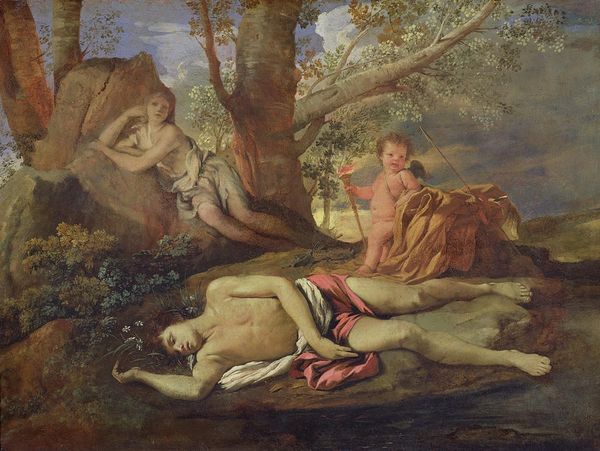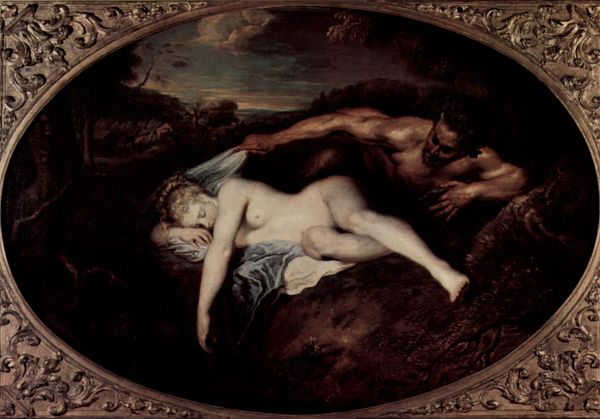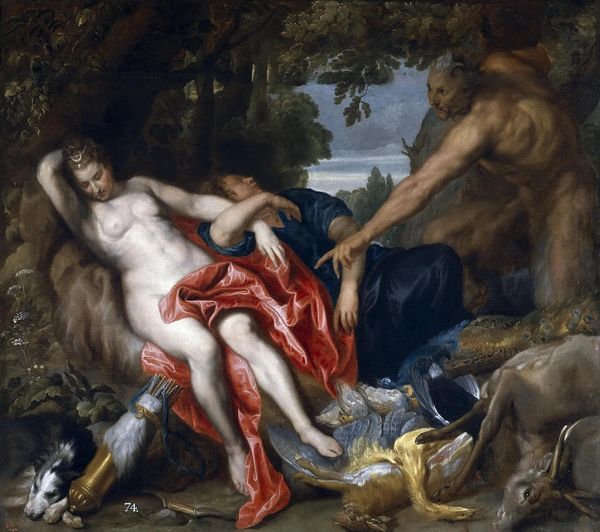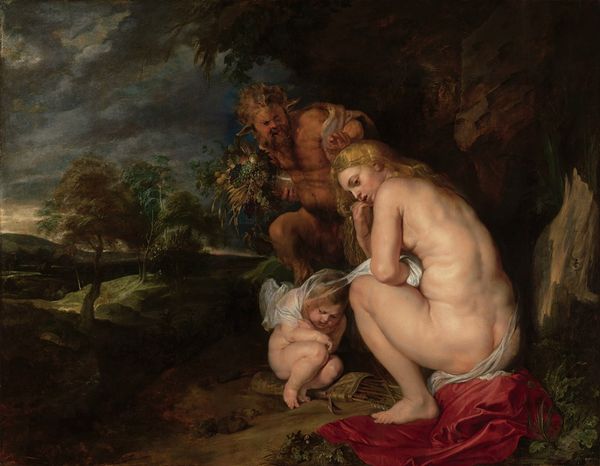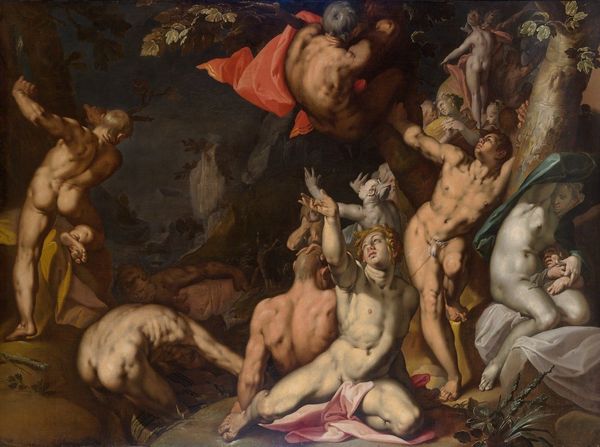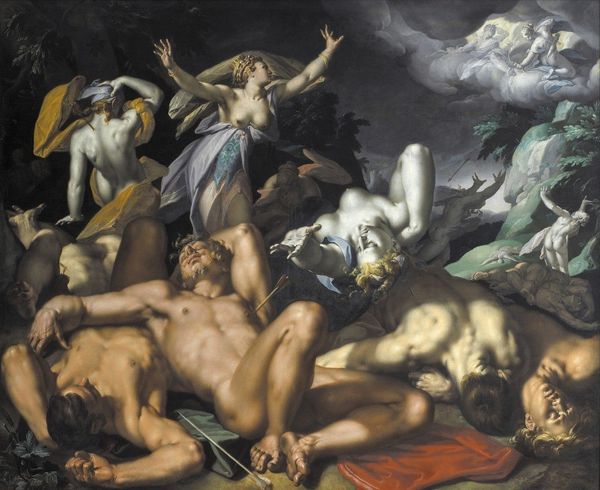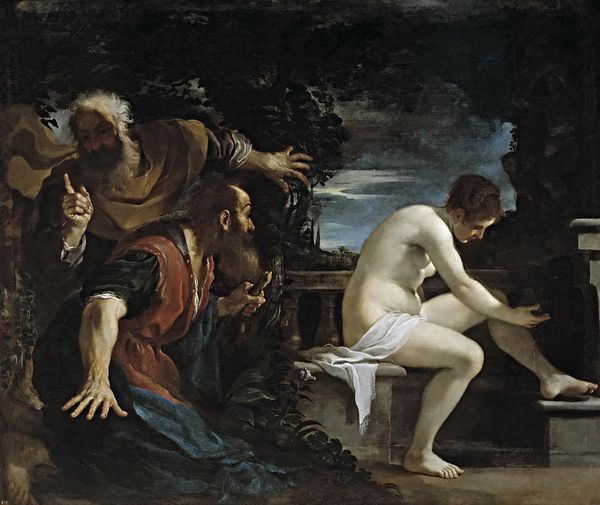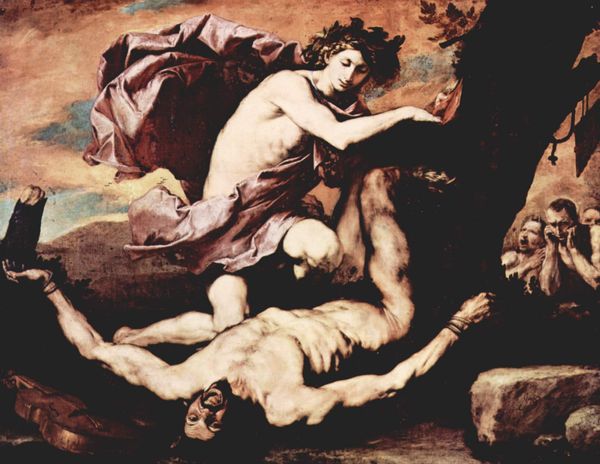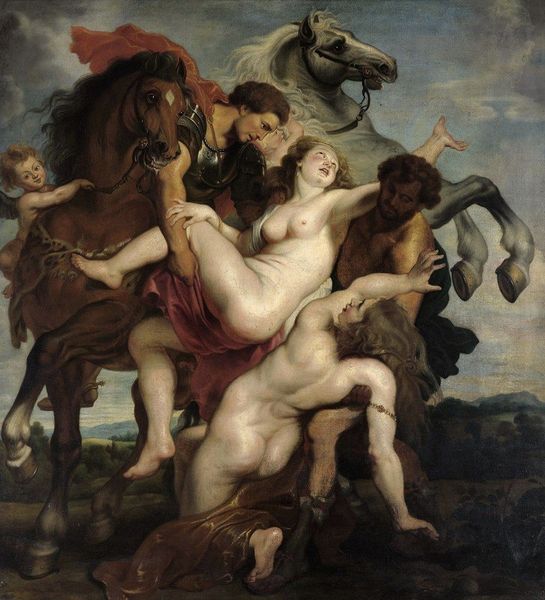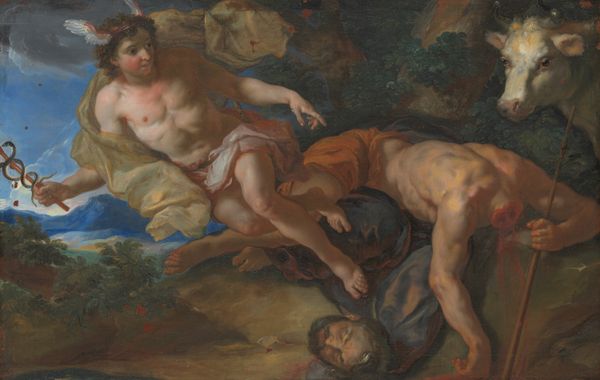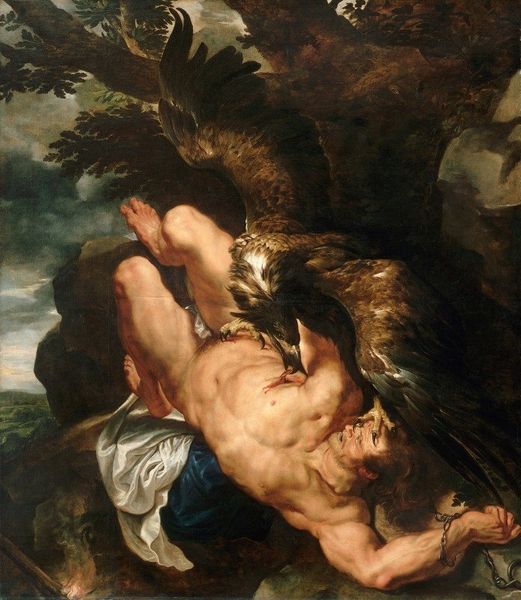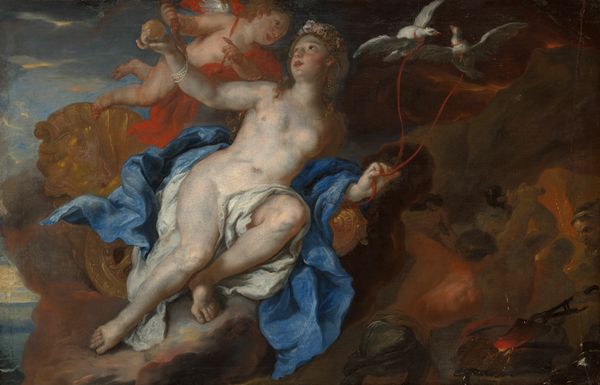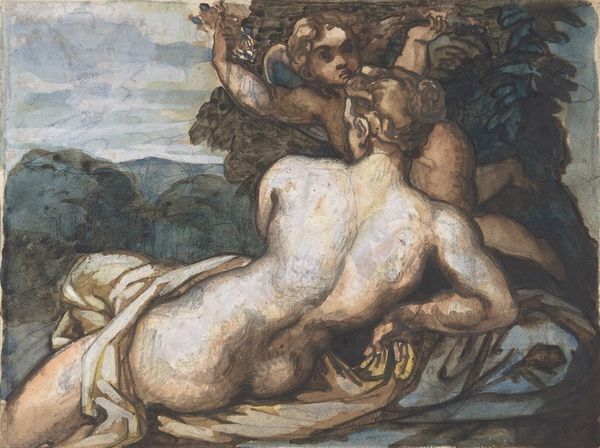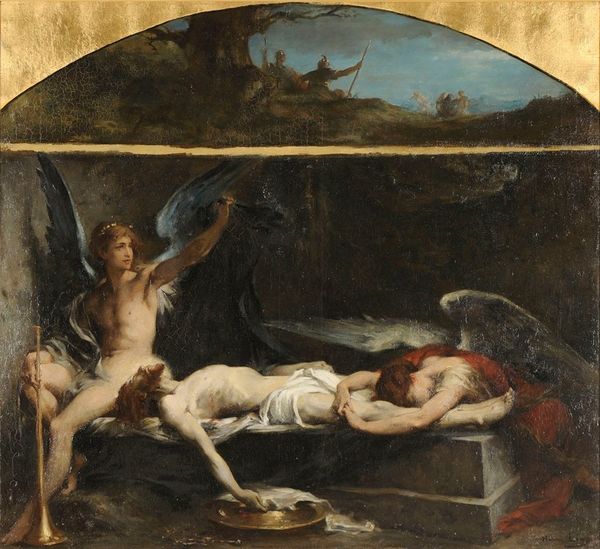
#
charcoal drawing
#
possibly oil pastel
#
charcoal art
#
oil painting
#
neo expressionist
#
portrait head and shoulder
#
underpainting
#
mythology
#
animal drawing portrait
#
facial study
#
charcoal
Copyright: Public Domain: Artvee
Anthony van Dyck painted 'Jupiter and Antiope' sometime in the 17th century, using oil paint on canvas. Van Dyck was part of Peter Paul Rubens's workshop, where the division of labor was a norm: assistants specialized in painting drapery, animals, or backgrounds. Here, the textures achieved in the fabrics, the sheen on the eagle's feathers, and the flesh tones all point to a highly developed studio practice. Consider, for example, the build-up of thin, translucent layers of paint, a hallmark of the Flemish tradition. Look closely and you can see how the artist manipulated the viscosity of the oil paint to create contrasting effects, from the smooth, almost porcelain-like surface of Antiope's skin to the rougher, more textured rendering of Jupiter's beard and the eagle’s plumage. It is important to appreciate the ways in which materials and the making process have imbued the artwork with social significance. 'Jupiter and Antiope' is not just an image, but a testament to the skill, labor, and cultural values of its time.
Comments
No comments
Be the first to comment and join the conversation on the ultimate creative platform.
